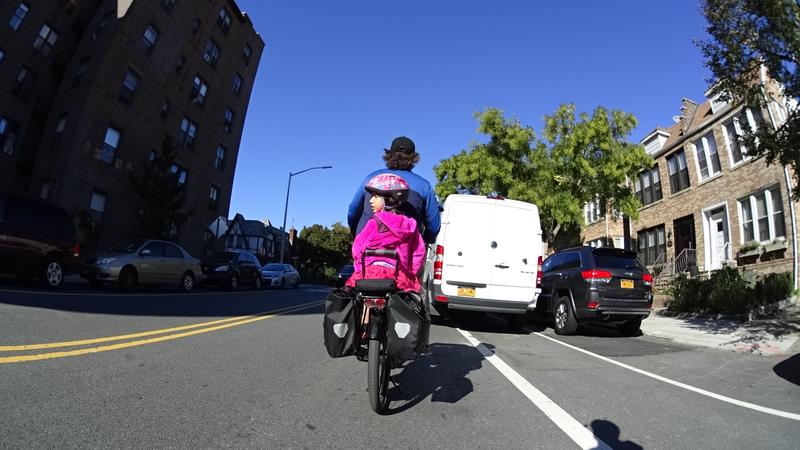
Over the past two months, we've looked at a lot of photos of blocked bike lanes and the ticketing for it, as part of our Bike Blockers project. While the submissions we received don't cover the city uniformly, we've learned something about how people — whether they be pedestrians, driver, cyclists or otherwise — use this relatively new space on New York City streets.
1. Drivers can find a way into a bike lane, even ones "protected" from the street.
2. It's not just drivers who invade bike lanes.
3. The NYPD is getting better at issuing tickets — in some places.
The number of tickets for blocking bike lanes grew by about 40 percent between the 2014 and 2015 fiscal years, rising faster than the bike lane network expanded, in terms of miles.
Enforcement along West 106th Street in Manhattan appears particularly strong. The NYPD issued about 770 tickets per quarter mile there in the 12 months ending in June 2015. Not so hot was the infamous Jay Street in downtown Brooklyn (just 540 tickets over the same distance) and the same-sized stretch of Chrystie and Canal streets in Chinatown (230 tickets), even though those areas attracted even more Bike Blocker photos from our listeners.
4. Taxi and livery cars that block bike lanes have it hard.
Although the bulk of bike lane obstructions tickets by the NYPD don't go to taxis or livery cars (it's less than 1%), a few Bike Blocker participants said the city Taxi and Limousine Commission did a good job following up on complaints about those drivers. Paul Vogel of Prospect Heights, who sent over 700 photos for the Bike Blocker project, said he has submitted hundreds of complaints about taxis blocking bike lanes through 311online, and the agency has promptly responded, sometimes issuing fines.
5. The variation in bike lane enforcement by the NYPD is a bit of a mystery.
The NYPD press office wouldn't discuss why enforcement is stronger in some areas than others. But at a community council meeting, Lt. Daniel Green, head of special operations in the 5th precinct, said: "Our enforcement is going to be driven by where people get hurt, where there are accidents, and feedback from the community."
That's sort of true: City data shows there were more vehicular crashes along Chrystie Street in Chinatown, for example, than along Foley Square, both in the 5th precinct. While we received a bunch of Bike Blocker photos in both areas, police handed out more obstruction tickets along Chrystie Street than in Foley Square.
But remember West 106th Street? It's had fewer collisions than Jay Street or Chrystie Street, and yet far more tickets were handed out.
6. Mostly NYPD traffic enforcement agents, not patrol cops, are in charge of keeping the bike lanes clear.
About 90 percent of tickets issued for blocking bike lanes are issued by traffic enforcement agents (most of the rest are issued by patrol officers). These agents are not police officers based out of the precincts. In fact, traffic agents used to be part of the City's Department of Transportation until 1996. Now they're under the NYPD's Transportation Bureau, which is divided into eight units, each led by a traffic manager. It will take further research to find out if the units have different standards for enforcement from each other, and whether that leads to inconsistent enforcement across the city. (The NYPD site doesn't include a map of the traffic units, so we made one based on information from the NYPD press office.)
Kathryn Tam made the map of the traffic enforcement districts with help from Jenny Ye of Data News. John Keefe and Alan Palazzolo also of Data News made our Bike Blockers map.


